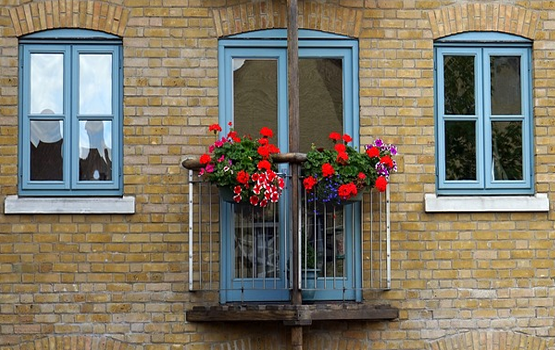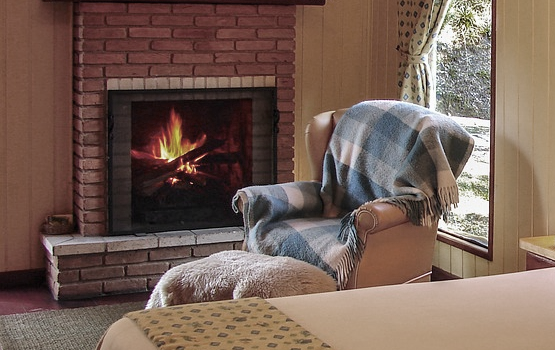Carbon Monoxide Poisoning
Carbon monoxide (CO) can build in your house when you have malfunction or poorly maintained fuel burning equipment, or when venting is obstructed or damaged. Every household that has fuel burning appliances needs to be aware of the risks.
Carbon Monoxide Can Be Deadly
You can't see or smell carbon monoxide, but at high levels it can kill a person in minutes. Carbon monoxide (CO) is produced whenever any fuel such as gas, oil, kerosene, wood, or charcoal is burned. If appliances that burn fuel are maintained and used properly, the amount of CO produced is usually not hazardous. However, if appliances are not working properly or are used incorrectly, dangerous levels of CO can result. Hundreds of people die accidentally every year from CO poisoning caused by malfunctioning or improperly used fuel-burning appliances. Even more die from CO produced by idling cars. Fetuses, infants, elderly people, and people with anemia or with a history of heart or respiratory disease can be especially susceptible. Be safe. Practice the DO’s and DON’Ts of carbon monoxide.
CO Poisoning Symptoms
Know the symptoms of CO poisoning. At moderate levels, you or your family can get severe headaches, become dizzy, mentally confused, nauseated, or faint. You can even die if these levels persist for a long time. Low levels can cause shortness of breath, mild nausea, and mild headaches, and may have longer term effects on your health. Since many of these symptoms are similar to those of the flu, food poisoning, or other illnesses, you may not think that CO poisoning could be the cause.
Warning signs of inadequate ventilation are stuffy atmosphere, lingering odors from in complete combustion, back drafts and smoking fireplaces.
Additional ventilation can sometimes be required in houses with heating systems that require little or no indoor air, electrically heated homes, homes with chimney-free condensing furnaces, or houses with a fuel burning furnace enclosed in a room with air for combustion from the outside. Furthermore, super energy-efficient houses usually require special ventilation.
Play It Safe
If you experience symptoms that you think could be from CO poisoning:
- DO GET FRESH AIR IMMEDIATELY. Open doors and windows, turn off combustion appliances and leave the house.
- DO GO TO AN EMERGENCY ROOM and tell the physician you suspect CO poisoning.
- If CO poisoning has occurred, it can often be diagnosed by a blood test done soon after exposure.
DO be prepared to answer the following questions for the doctor:
- Do your symptoms occur only in the house?
- Do they disappear or decrease when you leave home and reappear when you return?
- Is anyone else in your household complaining of similar symptoms?
- Did everyone’s symptoms appear about the same time?
- Are you using any fuel-burning appliances in the home?
- Has anyone inspected your appliances lately?
- Are you certain they are working properly?
Note: CO alarms detect CO only. If your household use natural gas as a fuel, you will need a natural gas alarm to detect a natural gas leak. You can also use a combination CO/natural gas alarm to detect both problems.
Learn how to protect yourself and your family from this 'silent killer' and read related article Prevention is the Key to Avoiding Carbon Monoxide Poisoning
RELATED LINKS:
- FREE Reports & Articles
- Your Heating System
- Improving Heating Efficiency
- Make the Necessary Improvements
- Quick & Easy Ways to Spruce Up Your Home
- Bathroom Makeovers
Windows & Doors
Worn and torn weather stripping around windows and doors waste energy when heating and cooling your home. Since 6 to 10 percent of a home's energy loss occurs around windows and doors without proper airtight seal, it is good idea to check for drafts by holding a lit candle around window frames and doors. If candle flickers, you have a draft and need to replace or install weather stripping and caulking around windows and doors. It is also good idea to add a door sweep. Read more...
Heating Tips
Programmable thermostats can help you cat your energy bill by 10 percent or more. They can be set to automatically turn down the temperature for any number of hours during a day or night, either when you're not home or when you're sleeping. They are now cheaper than ever, with models starting under $30. Also, make sure your thermostat is on the right wall.
Read more...

